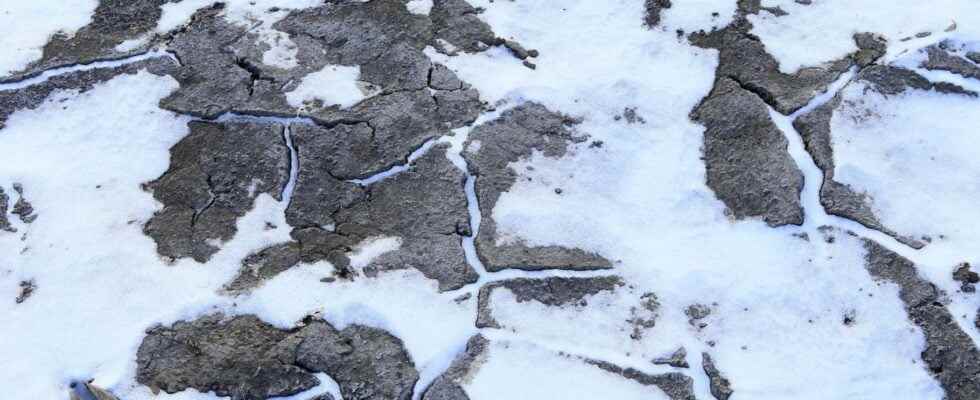Using data collected by an earthquake monitoring site abutting Mount Zugspitze, geologists have found a correlation between melting permafrost and seismic waves. The latter would propagate less quickly when the permafrost experiences periods of melting, especially during the summer season.
In a study prepublished on August 25, 2021 and accepted on the site of theAmerican Geophysical Uniona team of researchers led by the seismologist Fabian Lindner would have noticed the melting of permafrost thanks… to earthquakes. The geologists focused their research on Mount Zugspitze, the highest peak in Germany. Variations in seismic velocity could be correlated with the long-term degradation of the permafrost, mainly located on the northern flank of the Zugspitze. If the measurements were taken using a station installed at the very summit, the scientists indicate that larger devices could make it possible to study in detail the evolution of permafrost, threatened throughout the world by global warming.
Monitoring earthquakes to study permafrost
Mount Zugspitze is a prime target for geologists and European seismologists. The peak culminates at 2,962 meters and houses several structures including a center of seismology mainly used by researchers at the Ludwig-Maximilians University in Munich. By combining recent observations and analyzes of data collected by the station over the past 15 years, Dr. Lindner and his team have detected subtle changes in velocity in the signals emitted during movements of rocks causing seismic waves.
With a variability of 0.1% over the year and 3% betweenwinter and summer, these seismic wave characteristics attracted theeye geologists who finally made the connection with the melting permafrost. The latter is located exclusively on the northern part of the peak, and remains subject to seasonal weather fluctuations. The data acquired over the years as well as tomographic studies (modelization from volume of an object from measurements external to this object) made it possible to isolate a regularity in the degradation of the permafrost. Seismic waves propagate most rapidly from September onwards, when the temperature at the top of the mountain falls below the icing point, below 0°C. The melting of the permafrost causes a slowdown in seismic waves between the months of April and August, during which the temperature exceeds 0°C.
Towards the disappearance of permafrost?
An experiment using seismic data to analyze the evolution of permafrost had thus been carried out in alaska. And geologists are adamant: permafrost is melting and deteriorating around the world, raising a real ecological problem. Permafrost is notably considered a “ticking time bomb” because these icy layers of the earth’s surface trap approximately 1,400 gigatons of carbondue to the decomposition of materials organisms, animals or plants. With the gradual thawing of the permafrost, these gas could accentuate the impact of global warming.
As for the deterioration of the condition glaciers, nothing can really prevent permafrost from melting in a time of global warming. Scientists have nevertheless thought about alternatives to preserve it, as reported in a study published in 2020which explained that the movement and grazing of animals in regions frozen by permafrost could mitigate its melting.
Interested in what you just read?
